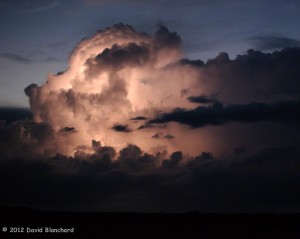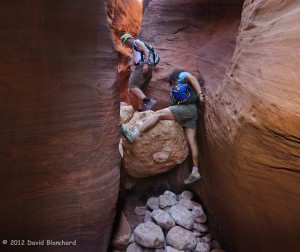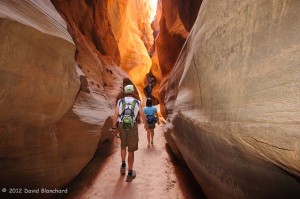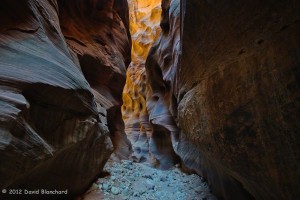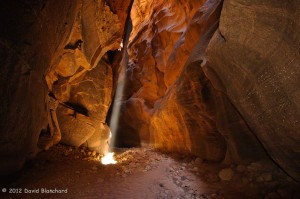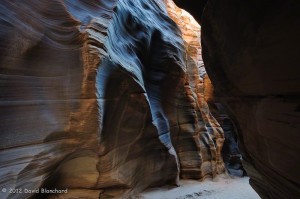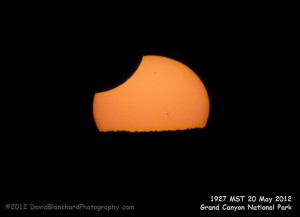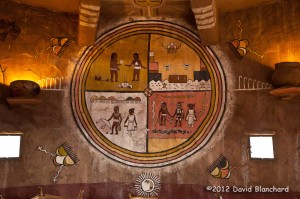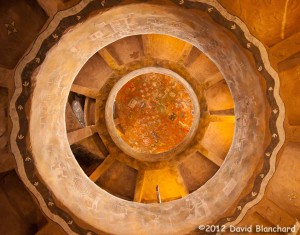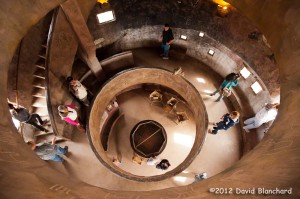The North American Monsoon was going strong in late August and I decided to take a day trip up to the south rim of the Grand Canyon. My goal was to photograph lightning — both during the daytime and in the twilight hours — over and in the canyon.
I wasn’t disappointed. There were only a few thunderstorms around and that makes for better chances since there are fewer intervening storms and there is a better chance of catching some of the sky.
The first two images are of fairly weak thunderstorms producing only a few flashes as they traversed the canyon from south to north.

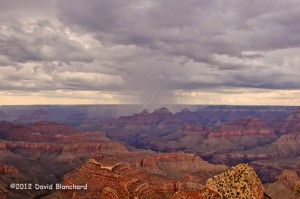
Later in the evening there was thunderstorm activity over the Kaibab Plateau and the north rim. This image captures the small thunderstorm as well as the stars overhead and the lights of the North Rim buildings.

The last image was taken as the storms ended leaving only a thin layer of clouds with the stars shining brightly and the inner canyon illuminated by the light of the full moon.
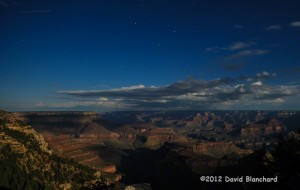
A few notes of interest. While taking lightning photos using my lightning trigger, a group of four photographers showed up at the same viewpoint — all with the same lightning trigger. And later, during the twilight hours, another group of lightning photographers arrived at the same viewpoint. Turns out these were folks from News9.com (an Oklahoma City television station). It’s not clear to me how lightning over the Grand Canyon is part of the news team coverage for Oklahoma City.

